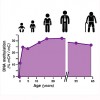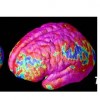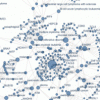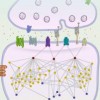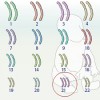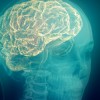Childhood Indications of Schizophrenia
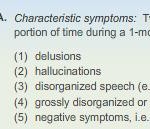 A recent 30 Year longitudinal study of individuals from New Zealand has revealed early indications of schizophrenia development later in life. Unlike many mental disorders, schizophrenia usually strikes much later in life (usually in mid to late adolescence) and so parents and patients alike may be unaware that there is a potential problem. In many places adequate access to proper mental-healthcare is lacking, so even when a diagnosis is possible, treatment may not be.
A recent 30 Year longitudinal study of individuals from New Zealand has revealed early indications of schizophrenia development later in life. Unlike many mental disorders, schizophrenia usually strikes much later in life (usually in mid to late adolescence) and so parents and patients alike may be unaware that there is a potential problem. In many places adequate access to proper mental-healthcare is lacking, so even when a diagnosis is possible, treatment may not be.
Obviously, the earlier individuals have access to information about their health, the longer they have to make appropriate choices. When it comes to mental-health, a properly responsive school environment may be the first place problems can be identified and, if possible mitigated or corrected. The discovery that there are possible early and characteristic differences in scoring on standardized testing, may give crucial warning signs that would allow proper intervention on behalf of affected students, especially those already at higher risk because of a family history of schizophrenia.
The study conducted by Duke University followed 1000 New Zealanders over the course of 30 years, and administered routine standardized testing at age 3, 5, 7, 9, 11, and 13 years of age. By the time study participants had reached 32 years of age, around 1 percent of participants were being treated for schizophrenia, and another 1.5 were diagnosed but untreated. The testing results from those suffering from schizophrenia had characteristic differences by the age of 7; so at least within the first year of schooling, there are already differences that could raise concern.
Doing poorly on certain standardized tests is certainly not in itself an indication of schizophrenia, but it’s the ways in which the children who later suffered from schizophrenia fell behind their peers that is revealing. According to study author Richard Keefe, these children lag behind their peers initially, and then continue to deteriorate. They tended to have more problems with verbal skills and memory; both obvious impediments to successful learning.
Naturally, the question to ask now is can anything be done to improve our early identification of these at-risk children, and intervene? It is already common to treat early identified autistic children with lots of interactive therapy to help them develop and improved social skills. Can we identify potential schizophrenics and stop whatever process that allows the 3-year old “symptomless” child into the 7-year old “high-risk” individual?
http://ajp.psychiatryonline.org/cgi/reprint/appi.ajp.2009.09040574v1
Schizophrenia in childhood from G2C Online:
http://www.g2conline.org/819
| Print article | This entry was posted by Jason Williams on January 25, 2010 at 4:00 pm, and is filed under G2C Online. Follow any responses to this post through RSS 2.0. You can skip to the end and leave a response. Pinging is currently not allowed. |

